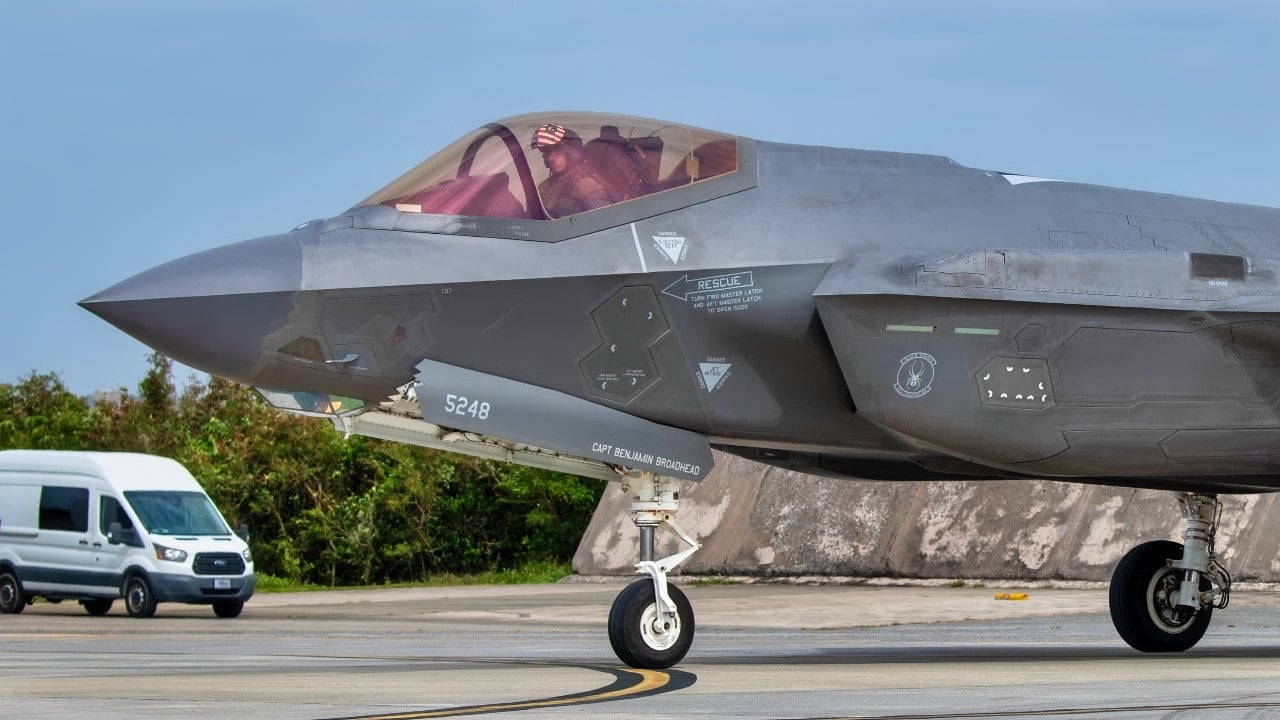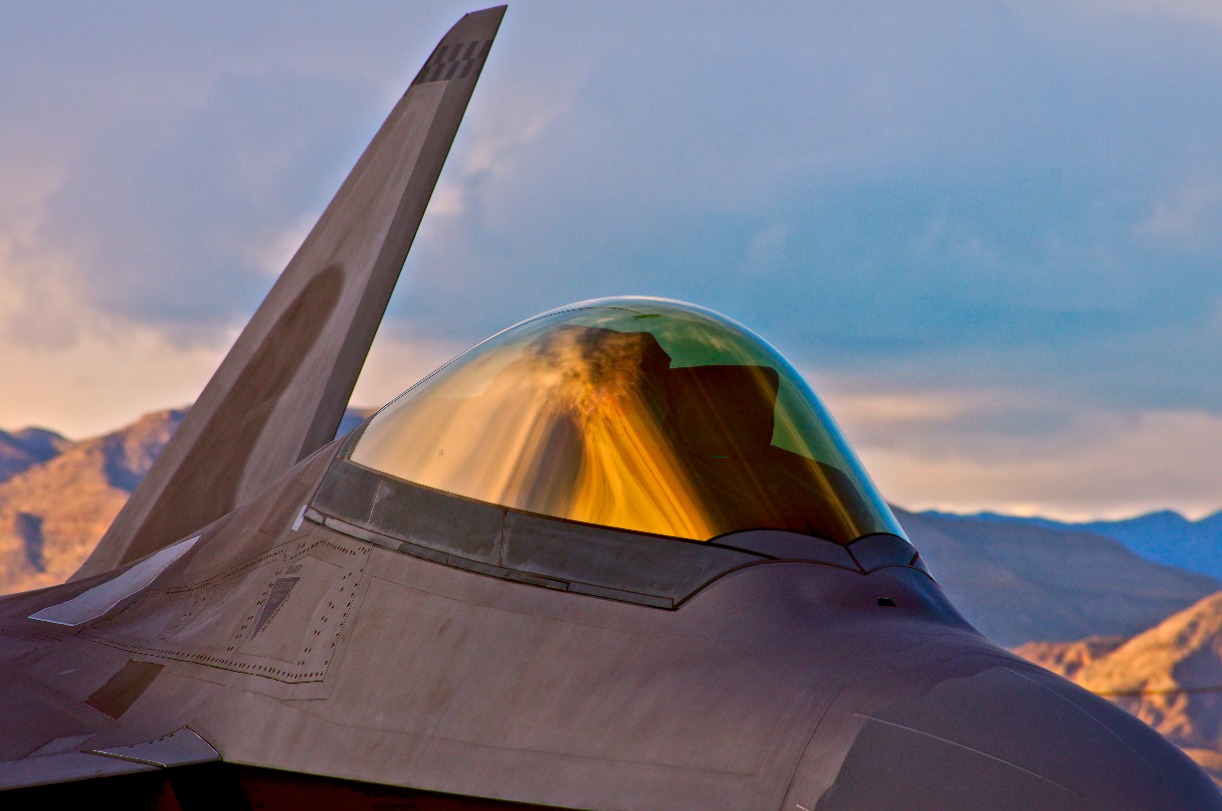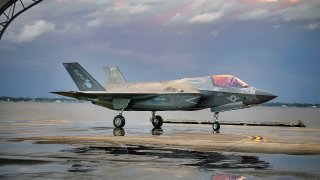F-22 Raptors and F-35 Fighters Battled in the Sky (In a Simulation)
In May, two U.S. Air Force F-22 Raptor stealth fighters engaged in a rare dogfighting exercise with two South Korean F-35A Lightning II stealth fighters over the Korean Peninsula. The exercise allowed both aircraft to test their close-range combat capabilities.
What You Need to Know: In May, two U.S. Air Force F-22 Raptor stealth fighters engaged in a rare dogfighting exercise with two South Korean F-35A Lightning II stealth fighters over the Korean Peninsula. The exercise allowed both aircraft to test their close-range combat capabilities.

-While the F-35 is a versatile multirole fighter equipped with advanced sensors and stealth technology, it is not primarily designed for dogfighting and may be at a disadvantage against fourth-generation fighters in such scenarios.
-The F-22, however, excels in air superiority and dogfighting due to its superior avionics, stealth features, and thrust vectoring capabilities. The drill highlighted the strengths of both aircraft and their roles in modern aerial warfare.
The Stealth Fighter Match the World Wants to See
Last May, a pair of U.S. Air Force F-22 Raptors stealth fighters went up against a pair of South Korean F-35A Lightning II stealth fighter jets.
This was a rare opportunity for the two Western stealth fighter jets to go up against one another and test their dogfighting capabilities.
F-22 Raptor v. F-35 Lightning II
The four stealth fighter jets engaged in close-range air combat, or dogfighting, taking turns attacking and defending.
Although the F-35 Lightning II can definitely engage in dogfighting, it is not designed to do so and could be at a disadvantage even against fourth-generation aircraft, such as the F-16 Fighting Falcon and F-15 Strike Eagle. To win in the skies, the F-35 Lightning II relies on its stealth capabilities and advanced weaponry. Its stealth capabilities make the aircraft hard to impossible to detect by enemy sensors at far distances, while the aircraft’s advanced munitions can take out incoming enemy aircraft hundreds and scores of miles away.

In actual combat, the F-35 Lightning IIs would direct the F-22 Raptors into enemy aircraft and support them with their capabilities.
Two Exceptional Aircraft
The F-22 Raptor is the best air superiority fighter jet in the world. Its superb avionics, stealth characteristics, and advanced munitions make it the king of dogfighting.
Introduced in the early 2000s, the F-22 Raptor can reach speeds of Mach 2 (around 1,550 miles per hour), while also supercruise, or fly at supersonic speeds without the use of afterburners. In terms of range, the F-22 Raptor has an operational range of around 1,000 miles without the use of external fuel tanks.
The F-22 Raptor is a dying aircraft. The Air Force only received 186 jets after Lockheed Martin closed the production line to support the developing F-35 Lightning II. Out of those aircraft, only a smaller number remains operations—exact figures are classified. The Air Force plans to replace the F-22 Raptor with the Next Generation Air Dominance (NGAD) sixth-generation stealth fighter jet.
It is the aircraft’s two-dimensional thrust vectoring capabilities and high thrust-to-weight ratio that allow the aircraft to quickly change direction mid-flight and gain an advantage over an adversary in a dogfight.
The most advanced fighter jet in the world, the F-35 Lightning II, is the quarterback of the skies. Its advanced sensors allow the stealth aircraft to connect air, naval, and ground forces and coordinate their capabilities and facilitate a more efficient and effective kill chain. Unlike the F-22 Raptor, the F-35 Lightning II doesn’t specialize on air superiority but can conduct a wider range of mission sets, including Strategic Attack, Intelligence, Surveillance, and Reconnaissance (ISR), Close Air Support, Electronic Warfare, Suppression of Enemy Air Defenses (SEAD), and Destruction Enemy Air Defense (DEAD).

The F-35 comes into three versions: A, B, and C. The F-35A is the most popular version and uses conventional runways to operate. The F-35B is the Short Take-Off, Vertical Landing (STOVL) iteration and can take off and land like a helicopter but operate as a fighter jet. Finally, the F-35C is the carrier version of the aircraft and is designed to operate from aircraft carriers.
The F-35 is the future, with more than 3,500 aircraft of all three types ordered by 19 countries.
About the Author:
Stavros Atlamazoglou is a seasoned defense journalist specializing in special operations and a Hellenic Army veteran (national service with the 575th Marine Battalion and Army HQ). He holds a BA from Johns Hopkins University and an MA from the Johns Hopkins School of Advanced International Studies (SAIS). His work has been featured in Business Insider, Sandboxx, and SOFREP.
Image Credit: Creative Commons and/or Shutterstock.


